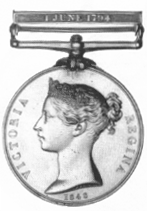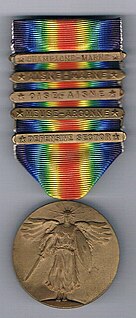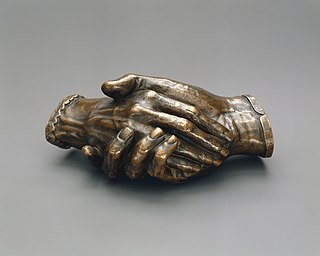
The Claddagh ring is a traditional Irish ring which represents love, loyalty, and friendship.

Paradorn Srichaphan is a retired professional tennis player from Thailand. He was the first men's singles player from Asia to be ranked in the top 10 of the ATP rankings, reaching a career high world no. 9. His nickname is "Ball". He graduated as a Bachelor of Social Science from Ramkhamhaeng.

In human anatomy, the wrist is variously defined as 1) the carpus or carpal bones, the complex of eight bones forming the proximal skeletal segment of the hand; (2) the wrist joint or radiocarpal joint, the joint between the radius and the carpus and
(3) the anatomical region surrounding the carpus including the distal parts of the bones of the forearm and the proximal parts of the metacarpus or five metacarpal bones and the series of joints between these bones, thus referred to as wrist joints. This region also includes the carpal tunnel, the anatomical snuff box, bracelet lines, the flexor retinaculum, and the extensor retinaculum.
Professional wrestling holds include a number of set moves and pins used by performers to immobilize their opponents or lead to a submission. This article covers the various pins, stretches and transition holds used in the ring. Some wrestlers use these holds as their finishing maneuvers, often nicknaming them to reflect their character or persona. Moves are listed under general categories whenever possible.

In biology, a clasper is a male anatomical structure found in some groups of animals, used in mating.

The World War I Victory Medal was a United States World War I service medal designed by James Earle Fraser.

Citizen Watch Co.,Ltd. is an electronics company primarily known for its watches, and is the core company of a Japanese global corporate group based in Tokyo. In addition to Citizen brand watches, it is the parent of American watch company Bulova, and is also known for manufacturing small electronics such as calculators.
Clasp, clasper or CLASP may refer to:
The rear naked choke (RNC) is a chokehold in martial arts applied from an opponent's back. The word "naked" in this context suggests that, unlike other strangulation techniques found in Jujutsu/Judo, this hold does not require the use of a keikogi ("gi") or training uniform.

A barrette, also known as a hair clip, hair-slide or clasp, is a clasp for holding hair in place. They are often made from metal and/or plastic and sometimes feature decorative fabric. In one type of barrette, a clasp is used to secure the barrette in place; the clasp opens when the two metal pieces at either side are pressed together.

A nelson hold is a grappling hold which is executed from behind the opponent, generally when both are on the mat face down with the opponent under the aggressor. One or both arms are used to encircle the opponent's arm under the armpit, and secured at the opponent's neck. Several different nelson holds exist, and they can be separated according to the positioning of the encircling arm(s). A nelson is used to control an opponent or to turn him over on his back and execute a pin.

The Naval General Service Medal (NGSM) was a campaign medal approved in 1847, and issued to officers and men of the Royal Navy in 1849. The final date for submitting claims was 1 May 1851. Admiral Thomas Bladen Capel was one of the members of the board that authorised the medal.

In heraldry, a bordure is a band of contrasting tincture forming a border around the edge of a shield, traditionally one-sixth as wide as the shield itself. It is sometimes reckoned as an ordinary and sometimes as a subordinary.

A medal bar or medal clasp is a thin metal bar attached to the ribbon of a military decoration, civil decoration, or other medal. It most commonly indicates the campaign or operation the recipient received the award for, and multiple bars on the same medal are used to indicate that the recipient has met the criteria for receiving the medal in multiple theatres.

An antistatic device is any device that reduces, dampens, or otherwise inhibits electrostatic discharge; the buildup or discharge of static electricity, which can damage electrical components such as computer hard drives, and even ignite flammable liquids and gases.
The Medieval period in England is usually classified as the time between the fall of the Roman Empire to the beginning of the Renaissance, roughly the years AD 410–1485. For the various peoples living in England, the Anglo-Saxons, Anglo-Danes, Normans and Britons, clothing in the medieval era differed widely for men and women as well as for different classes in the social hierarchy. The general styles of Early medieval European dress were shared in England. In the later part of the period men's clothing changed much more rapidly than women's styles. Clothes were very expensive and both the men and women of lower social classes continued to wear them until the garments were in such disrepair that they needed to be replaced entirely. Sumptuary laws also divided social classes by regulating the colours and styles these various ranks were permitted to wear.

The Fossil Wrist PDA is a smartwatch that runs Palm OS. The newer incarnation, which does not include Palm OS, is called the Fossil WristNet watch.

A watch strap, watch band, or watch bracelet is a bracelet that straps a wrist watch onto the wrist. Watch straps may be made of leather, plastic, rubber, cloth, or metal, sometimes in combination. It can be regarded as a fashion item, serving both a utilitarian and decorative function. Some metal watch straps may be plated with, or even in rare cases made of, precious metals.
The Sainya Seva Medal is a medal of the Indian Armed Forces. The medal is awarded in recognition of non-operational service under conditions of hardship and severe climate in specified areas.

Clasped Hands of Robert and Elizabeth Barrett Browning is an 1853 sculpture by Harriet Hosmer. Plaster casts are in the Schlesinger Library at Harvard University, and at the National Museum of Women in the Arts in Washington, D.C. As a bronze sculpture, versions are in the collection of the Metropolitan Museum of Art and in the "Cloister of the Clasped Hands" at Armstrong Browning Library, Baylor University.

















